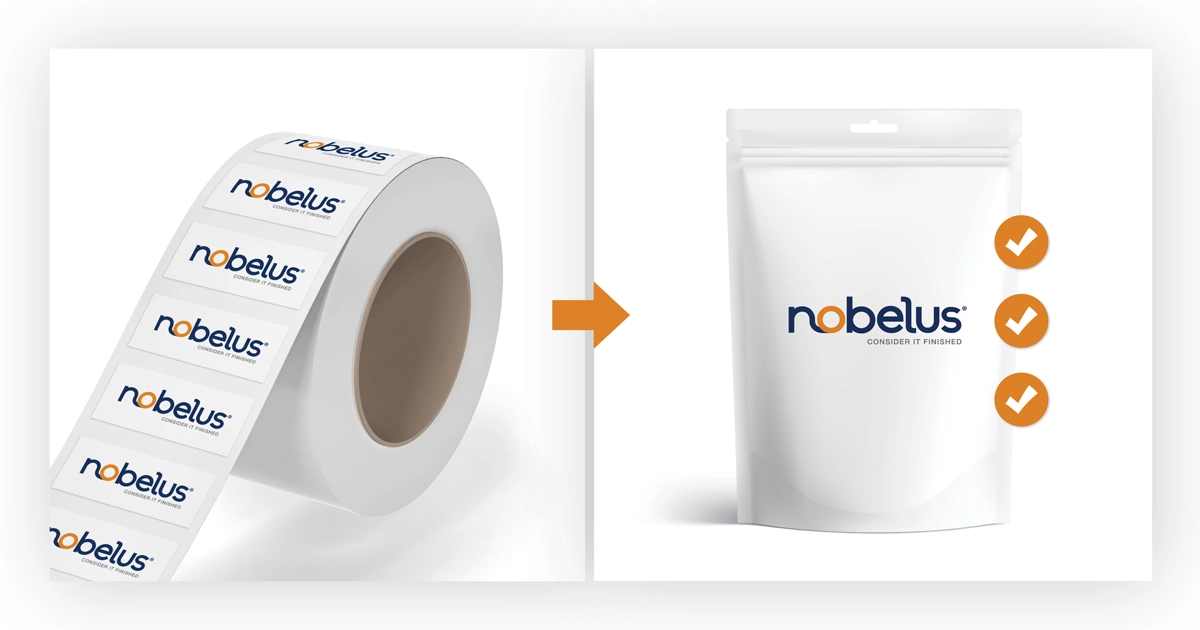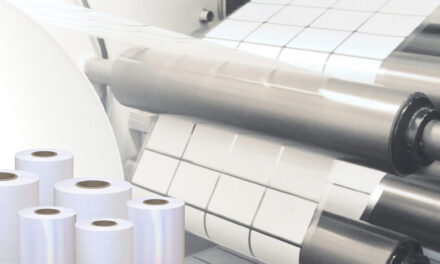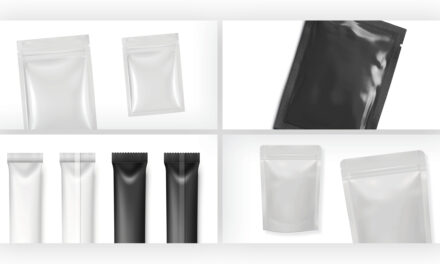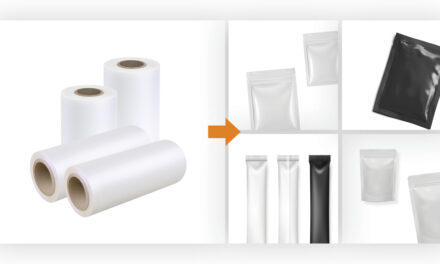PRIME LABEL CONVERTERS IN THE FLEXIBLE PACKAGING MARKET
Many experienced converters in the prime label industry are branching out into another market that is experiencing a surge in growth: flexible packaging. Prime labels and flexible packaging have a significant overlap in the packaging space, with many brands that use labels also selling products in flexible packaging, such as stand-up pouches, sachets, and stick packs.
By entering the flexible packaging market, label converters have a prime opportunity to expand their services, grow their business, and gain valuable experience in a highly technical field. Whether your prime label operation utilizes digital printing technology and thermal lamination or a flexographic press capable of wet lamination, there are flexible packaging methods that can fit seamlessly into your workflow. Here are our top three reasons prime label converters should branch out into the flexible packaging market.
1. Higher Revenue and Profit Margins
When deciding if they should take their company in a new direction, every business owner begins with one crucial question: Will the financial investment be worth the risk? Prime label converters curious about flexible packaging are no exception. One needs only to look at the revenue growth of label converters who have already integrated flexible packaging into their product offerings to see that their answer would be a resounding yes.
The flexible packaging market has experienced unprecedented growth in recent years—a trend that shows no signs of slowing down in the near future. As more brands turn from rigid packaging to flexible alternatives, label converters are in a perfect position to capitalize on this increased interest in pouches, bags, and other similar packaging types even as they continue selling to brands who use rigid packaging with decorative labels.
While a larger customer base can clearly provide a boost in revenue, label converters who enter the flex pack market soon find that their profit margins increase, as well. Because flexible packaging primarily serves a functional purpose, brands pay not only to market their product but also to keep it safe and fresh. Function and performance are so central to the value of flexible packaging that many flex pack converters have only recently begun to consider designs and aesthetics a top priority.
When a label converter combines their experience with graphics and design with a high-quality pouch or bag, they are uniquely positioned to offer brands luxury packaging that meets all their functional and marketing requirements at a premium price point. In fact, luxury flexible packaging can offer such high margins that many smaller businesses focus solely on specialty packaging, leaving products with smaller margins to large-volume converters.
For a creative converter, the possibilities are nearly endless: unforgettable haptic finishes, unique shapes and properties, and even spouts, zippers, and other helpful fitments. Each carefully selected design choice can lead to even larger profit margins as brands pay top dollar to vie for the consumer’s dollar. When these margins are paired with the steady growth of the flexible packaging industry as a whole, it is easy to see why so many label converters are expanding their offerings.
2. A Wider Range of Brands and Consumers
Labels are highly versatile and can be used on a variety of packaging types. However, flexible packaging enables converters to reach brands that have no reason to use labels when stand-up pouches, stick packs, and many other types of packaging can be printed on directly. Markets that label converters might otherwise deemed inaccessible or difficult to target, such as snack foods, frozen goods, and pet products, suddenly become prime opportunities when a converter begins offering flexible packaging.
By producing both prime labels and flexible packaging, a converter can capture brands who use labels on rigid packaging, flexible packaging without labels, or a combination of the two. A converter who can offer both labels and flexible packaging has a distinct advantage over those who offer only one because the more diverse converter can offer brands greater consistency across different types of packaging, a concept known as cross market ingenuity (CMI).
When brands have to source packaging from several different suppliers, the risk of variations in quality and specialty effects greatly increases. By strategically utilizing CMI and serving as a one-stop shop for brands that need specialty finishes, a converter can quickly position their business as the go-to source for all a brand’s packaging needs.
3. Security in Uncertain Markets
Most converters are experienced enough to know firsthand how volatile the retail market can be. Offering more than just labels provides your business with a safety net if a sudden market shift occurs due to changing consumer behavior or legislative action focused on environmental concerns. While the equipment and materials needed to produce labels and flexible packaging are often similar, the final products are different enough that market changes typically affect them quite differently.
For example, if luxury labels for craft beer cans begin to fall in popularity, health foods sold in stand-up pouches may be experiencing an economic boom. By investing in flexible packaging, a label converter can help ensure their portfolio is varied enough to stabilize business if one sector experiences any upsets. This added security can help prevent downsizing and even business closures, providing the operation with time to develop a long-term strategy on how to navigate the new market trends.
HOW TO ENTER THE FLEXIBLE PACKAGING MARKET AS A LABEL CONVERTER
While many prime label converters have already integrated flexible packaging into their business with great success, it is not a simple decision even for experienced converters. Before making any investments, label converters should conduct market research and make sure they understand the demands of flexible packaging. For a more in-depth look at what flexible packaging converters need to consider, explore our “How to Set Up Your Ideal Flex Pack Line” series, where we cover…
Starting With Pre-Laminated Roll Stock
Nobelus recommends that most label converters start small when first stepping into flex pack to gain experience and ensure it is a wise long-term decision for their business. Because flexible packaging production is a complicated science, label converters who try to in-source every process immediately risk failed investments, overwhelmed staff, and potential health and safety issues, depending on the market.
Most flexible packaging consists of many different film layers and materials laminated together into a cohesive structure specially designed to meet the needs of specific products. The process of designing these structures, called “application engineering,” requires extensive knowledge about the properties of the materials used in a package as well as the chemical and physical properties of a brand’s products. Additionally, the process of shaping the web structures into finished packaging requires technical knowledge and a significant equipment investment.
To keep their team from being overwhelmed in the early stages of flex pack integration, label converters can start by purchasing pre-laminated roll stock from a manufacturer and outsourcing the more complicated aspects of flex pack production. Using this method, the label converter needs only print the design and then give the web a protective overlaminate layer, known as the “print web” in flex pack. After the web is laminated, it can be sent to another facility to be shaped, filled, and sealed before it is shipped for retail.
This strategy allows a new flex pack converter to focus on the processes they have already mastered before deciding if they want to invest in more training and equipment to bring the other process in-house in the future.
Understanding Flexible Packaging
If a label converter who has gained significant experience with flex pack chooses to take more control by creating structures in-house, they will need to understand how each medium differs from the other in its function and construction. Prime labels focus almost exclusively on aesthetics, with printed designs and embellishments being the foremost concern for both the converter and their brands. In flexible packaging, on the other hand, it is much more important that the package functions correctly with appearance being a secondary concern.
This distinction chiefly comes down to the fact that flexible packaging frequently makes direct contact with the product being sold while labels typically make contact only with the exterior of the packaging. Flexible packaging must be carefully designed to preserve the integrity of the packaged product, be it a cosmetic powder, caustic cleaning liquid, or salty snack with high fat content, as well as the health and safety of the consumer.
Each type of product will have highly different requirements regarding material type, thickness, and processing method. Label converters need to conduct extensive research before investing in any additional equipment or materials to make sure they are capable of properly serving the brands and markets they are targeting.
Making Wise Equipment Investments
On a similar note, label converters will need to ensure any equipment systems they purchase will serve their long-term goals. Prime label converters who utilize flexographic presses already have much of the equipment needed to create a wide range of flexible packaging structures in-house through solventless lamination. On the other hand, digital label printers will find many pre-made packaging options that fit seamlessly in with their digital processes. With only a few workflow adjustments, prime label converters of every size and type can find ways to integrate flexible packaging into their offerings.
Regardless of their current printing equipment, most label converters will need to purchase additional shaping and processing equipment to create completed packaging unless they intend to outsource these functions to copacker. These specialized machines are capable of turning a flat web into stand-up pouches, sealed bags, flow wraps, and other packaging formats. New converters may want to choose the packaging format they find most promising and focus on mastering the process before investing in other types of machinery.
READY TO LEARN MORE ABOUT FLEXIBLE PACKAGING?
If you are a prime label converter who wants to explore flexible packaging, connect with us through phone or email to learn more about how you can grow your business and master flex pack. Our solutions managers have years of experience in both the label and flexible packaging markets, enabling them to answer your questions and give you helpful insights into what markets and packaging formats your operation would thrive in. Our sales representatives are highly knowledgeable about the finishes available for flexible packaging and can send you free sample rolls to trial.





